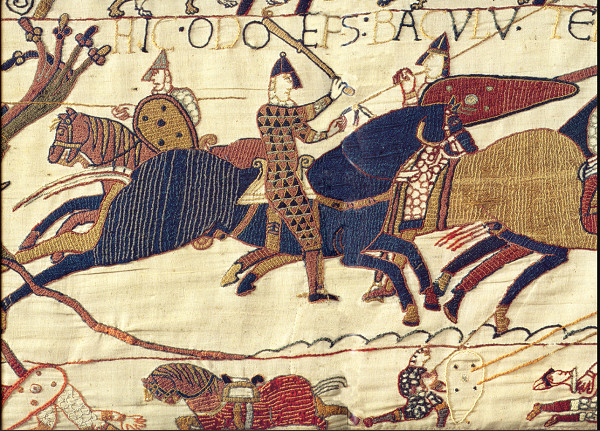Raimond - Battle Abbey Roll
Wilhelmina Powlett, Duchess of Cleveland in her book The Battle Abbey Roll takes the name Raimond which
she derives from "Giraldus Raimundus" as found in Domesday.
I can find no reference to Giraldus Raimundus in OpenDomesday.org, but there is an entry in Anna Powell-Smith's
database, that was generated from the Phillamore translation, for the Manor of Wye.
The Manor of Wye
The Royal Manor of Wye was a significant "asset" that the Conqueror chose to gift rights to the monks of Battle
Abbey.
According to Lambarde, it comprised the fifth part of the whole county of Kent. It was
Following the
Norman conquest Wye became a royal manor and a major religious centre attached to Battle Abbey.
As early as the 6th century Wye was a royal vill, and the royal court would have resided in the vicinity of Wye Court
for part of the year. In the 13th century it was a
Royal Manor whose Liberty extended as far as Hawkhurst. The Palace complex by then was at Wye Court
The assersion by the Duchess of Cleveland that the Raymonds were stewards of Wye is quite a statement.
Given the "esteem" that the Duchess' writings are held it is not likely that this is the case and it is
not known how she can make this claim. In addition, the period of time between the establishment of Battle Abbey
and the Dissolution is a large chunk of time. The statement:
..... the family was numerous in Kent. Their original seat was at Raymond's, near Rye. They "were for a
great length of time Stewards to the Abbot and Convent of Battel for their lands
near this place; and it is probable that it was once the original stock from which
the Raymonds of Essex, Norfolk and other counties, derived their extraction.
The family was extinct here before the thirty-sixth year of King Henry VIII" —
Hasted's Kent.
is not supported by anything that I can find in Hasteds Kent.
If Roger Raymond originated from Wye in Kent is highly speculative.
Top
From this Kentish stock Philipots, in his Villare Cantianum, concurs with
Hasted in deriving the Raymonds of Essex. Their first move, however, appears
to have been to Hunsdon in Hertfordshire, where we find Philip Raymond, in
the sixteenth century, married to a county heiress who brought him Essendon.
Their great-grandson John (who was living in 1627) bought Belchamp-Walter of
the Wentworths, and transplanted the Raymonds to this new home in Essex,
where they still flourish.
No doubt it was unwittingly that they thus returned to
the county in which the name had originally taken root at the Conquest.
What Michael Linton, 1066.co.nz, says about The Battle Abbey Roll"
This is popularly supposed to have been a list of William the Conqueror's companions preserved at Battle Abbey,
on the site of his great victory over Harold.
It is known to us only from 16th century versions of it published by Leland, Holinshed and Duchesne,
all more or less imperfect and corrupt. Holinshed's is much the fullest,
but of its 629 names several are duplicates. The versions of Leland and Duchesne, though much shorter,
each contain many names found in neither of the other lists. It was so obvious that several of the names
had no right to figure on the roll, that Camden, as did Dugdale after him, held them to have been
interpolated at various times by the monks, "not without their own advantage."
Modern writers have gone further, Sir Egerton Brydges denouncing the roll as "a disgusting forgery," and
EA Freeman dismissing it as "a transparent fiction." An attempt to vindicate the roll was made by the last
duchess of Cleveland, whose Battle Abbey Roll (3 vols, 1889) is the best guide to its contents.
It is probable that the character of the roll has been quite misunderstood. It is not a list of individuals,
but only of family surnames, and it seems to have been intended to show which families had "come over with
the Conqueror," and to have been compiled about the 14th century. The compiler appears to have been influenced
by the French sound of names, and to have included many families of later settlement, such as that of Grandson,
which did not come to England from Savoy till two centuries after the Conquest. The roll itself appears to be
unheard-of before and after the 16th century, but other lists were current at least as early as the 15th century,
as the duchess of Cleveland has shown.
In 1866 a list of the Conqueror's followers, compiled from Domesday and other authentic records, was set up in
Dives church by Léopold Delisle, and is printed in the duchess' work. Its contents are naturally sufficient
to show that the Battle Roll is worthless.
